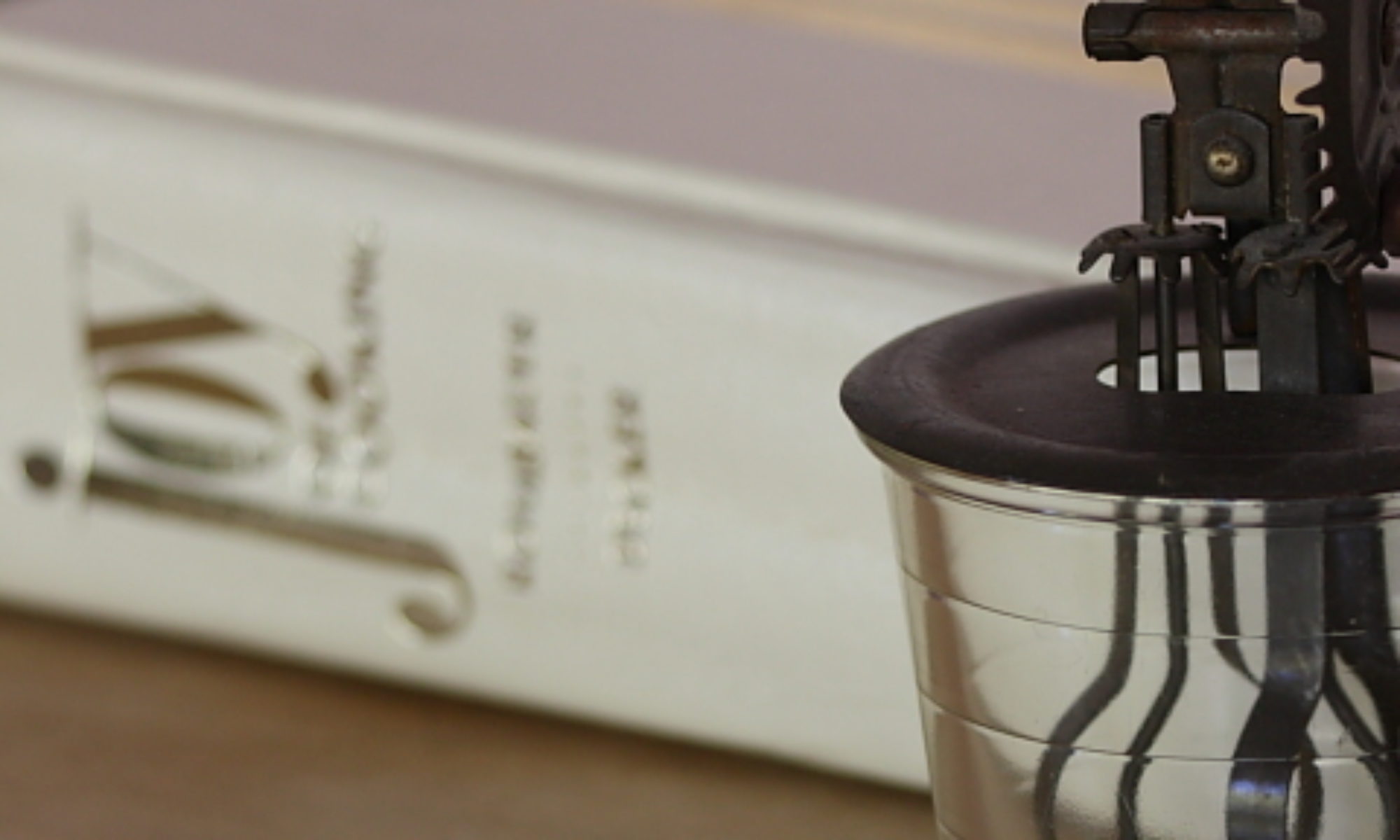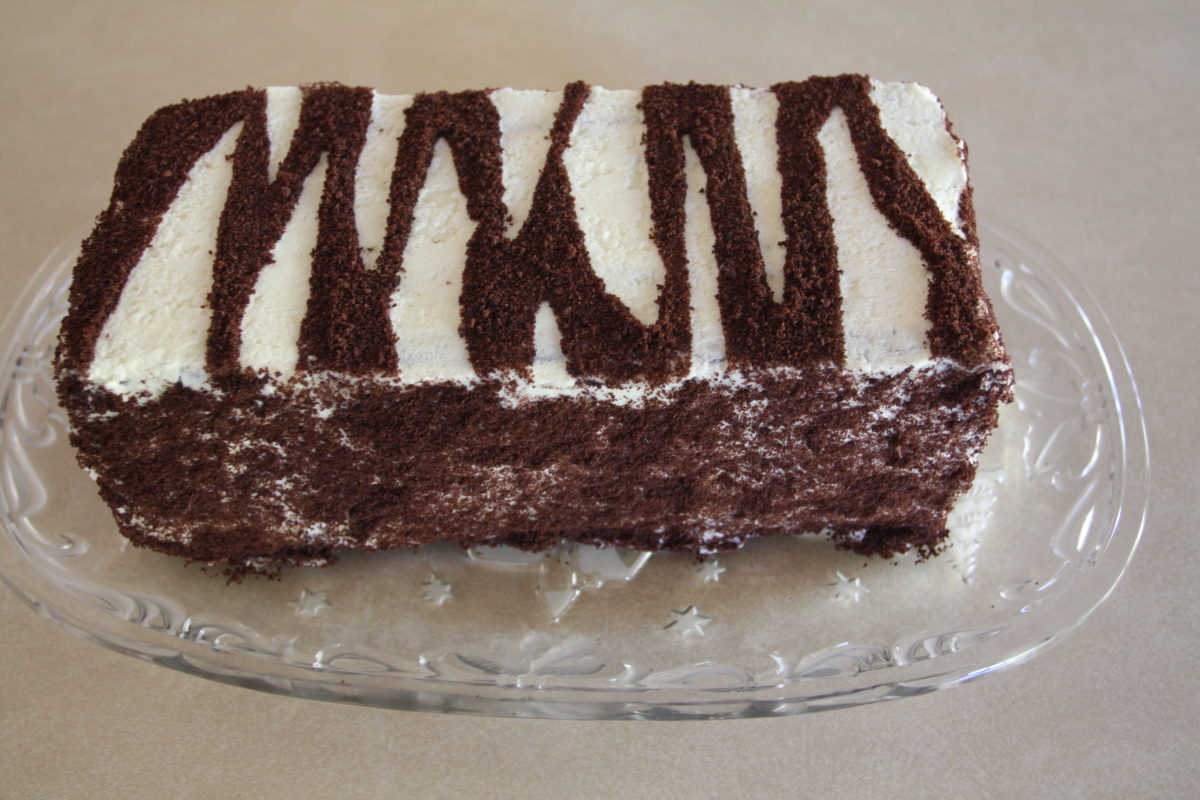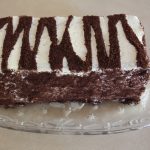
Now, if you’ve ever looked through the cookbook Bake It Like You Mean It, by Gesine Bullock-Prado, or have even seen the cover, you probably said to yourself, “Oh, my goodness! That is just plain AMAZING!” And, perhaps, something along the lines of “I could make cake from now to doomsday and never have one turn out like that!” If you haven’t seen her glorious creations, look here. We’ll wait until you pick your jaw up off the floor.
Jaw back in place? Good. Now we can move onto what she titles “Chocolate cake … plain and simple,” which is what we’re going to attempt. Looking at the pictures from her blog, we can say that we think only one of the adjectives in the name is correct. It is a chocolate cake. But if we’re ever going to attempt the cake on the cover of her book, this might be a good place to start. What’s the worst that can happen? End up with a cake that looks like it was hit with a weedwacker? Been there. That won’t scare scratchers.
We’re going to do this post over two days. Today, we’ll cover making the cake and frosting; tomorrow, the assembly. This division is to make it easier for us; you should make and assemble the cake on the same day.
Makes one cake (about 4x5x10 inches)
Chocolate Cake … plain and simple????
Ingredients
For the cake
- 6 eggs separated and room temperature
- 1/2 cup 50g Dutch-processed cocoa
- 1/2 cup hot coffee
- 1 1/2 cups 150 g cake flour (if using a measuring cup, sift before measuring)
- 1 1/2 cups 300 g sugar, divided
- 1 tsp baking powder
- 1 tsp baking soda
- 1 tsp salt
- 1/2 cup canola oil
- 1 Tbs vanilla extract
For the frosting
- 5 egg whites
- Pinch salt
- 1 cup sugar
- 1/3 cup water
- 1 tsp vanilla extract
- 1 pound 4 sticks unsalted butter, room temperature
Instructions
For the cake
- Preheat oven to 325°F. Line two half-sheet pans with baking parchment coated with cooking spray.
- Sift the cocoa, flour, 1/2 cup (100g) sugar, baking powder, and baking soda into the bowl of a stand mixer fitted with the paddle attachment.
- Turn mixer to medium, add oil, egg yolks, and vanilla. Mix until smooth, about a minute. With mixer still on medium, slowly add the half cup of coffee. Continue mixing until batter is very smooth, about 4 minutes. Transfer batter to a large mixing bowl.
- Thoroughly clean mixer bowl and attach whisk to mixer.
- Add egg whites and salt to mixer bowl and whisk on high. Once egg whites become foamy, slowly add 1 cup (200 g) of sugar, then continue whisking on high until egg whites hold firm but shiny peaks.
- In three additions, fold the egg whites into the chocolate batter, ensuring no white streaks remain.
- Divide batter between prepared sheets and smooth with a spatula or long knife.
- Bake 30 to 35 minutes or until the cakes spring back when press lightly.
- Let cool completely in pans.
For the frosting
- In a small saucepan over medium high heat, bring sugar and water to a boil, stirring until sugar is completely dissolved. Insert candy thermometer and boil, without stirring, until temperature reaches 234°F. Remove from heat.
- Place egg whites, vanilla, and salt in clean mixer bowl with clean whisk attachment fitted on mixer. Whisk on high until frothy, then start slowly pouring the hot syrup down the side of the bowl into the whites. Whisk on high until egg whites hold firm peaks and bowl is cool to the touch.
- With mixer on medium-high, add butter in pieces until frosting comes together to form a smooth spreadable frosting. It may look curdled before it comes together.
To assemble
- Slice each sheet cake into four 4x10 inch rectangles. Place one piece on wax paper-lined cookie sheet and apply a thin layer of frosting. Add a second piece of cake. Continue until you have seven layers. Place the cake in the freezer for 20 minutes.
- Meanwhile, break apart remaining cake and bake in a 200°F oven for 20 minutes to dry. Cool and pulse the dried cake pieces to crumbs in a food processor.
- Remove the cake from the freezer and place on serving plate. Turn the cake 90° so the layers are now vertical. Coat with a very thin layer of frosting and put back in freezer for 10 minutes.
- Coat entire cake and press strips of torn parchment into the frosting. Press crumbs over the entire cake. Brush crumbs from parchment and carefully remove the pieces of parchment.
Ingredient discussion:
Take the mantra of Gesine Bullock-Prado to heart with this cake (and all your baking): Bake it Like You Mean It. You’re making this for someone special, so go all out. Get some super-dark Dutch-processed cocoa; we use Valrhona, which is very good, but there are others that are good, too. Make sure to use cake flour. Eggs, of course, have to be the best you can get; it makes a difference in flavor and texture. Of course, 100% pure vanilla extract. For butter, only unsalted, because no one likes salty frosting.
Now, note that you have to separate almost a dozen eggs. You can do it; just separate them one at a time while they’re cold, and everything will work out. If you’re wondering what to do with those five extra yolks, we’d suggest using a couple for Basic Pasta Dough (just use the yolks in place of the whole egg), and the remaining three in a batch of Egg Yolk Sugar Cookies.
Procedure in detail:
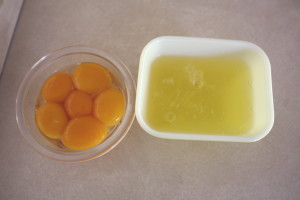
Take a deep breath. This cake looks challenging, but you can do it. So take a deep breath, set aside about a half a day so you won’t feel rushed, and let’s do it! If you’ve not done so yet, start by separating the eggs and taking out a pound of butter to warm.
Preheat oven to 325°F. Line two half baking sheets with parchment that’s been coated in cooking spray. The half-sheets we used are 10 1/2 x 15 1/2 x 1 inches, smaller than the standard 13 x 18 that professionals use. They still worked, but don’t go smaller.
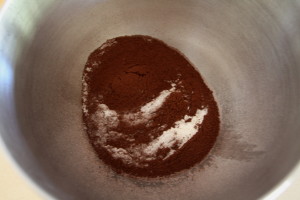
Sift dry ingredients. Sift the flour, cocoa, baking powder, baking soda, and sugar into the bowl of a stand mixer. We listed the weights in the ingredients list because we find it easiest to set the sifter right in the bowl, put it all on the scale, tare it, then add the ingredients directly to the sifter by weight. That way, the bowl catches any ingredients that fall through, you still get the right amount, and everything gets sifted.
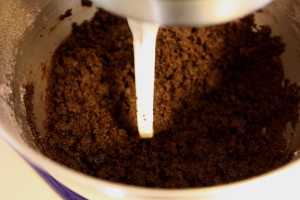
Mix in oil and eggs. Set the bowl in place on the mixer fitted with the paddle attachment and turn it to medium. Pour in the egg yolks, the vanilla, and the oil. To make it easier, we measured the oil into a measuring cup, and added the vanilla to that, so we could pour those in together, then we dropped in the yolks. Let it mix on medium until it’s smooth. Ours always looked a bit dry, but definitely let it get well-mixed.
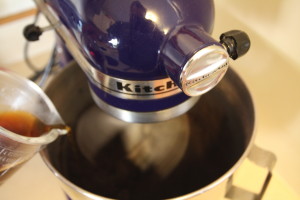
Add coffee. With the mixer still on medium, measure out the hot coffee and slowly pour it into the batter. Not so fast that it cooks the eggs; take about a minute to add the coffee. Let the mixer run on medium, periodically scraping down the sides of the bowl, until the batter is very smooth, 4 to 5 minutes.
Transfer and clean. Transfer the batter to a large bowl, then wash the mixer bowl thoroughly. Heck, double wash it to make sure there’s not a trace of oil left in the bowl. Wash the whisk attachment in the same way. That’s what we do so we’re sure that everything is super-clean, as even the smallest amount of oil will prevent the egg whites from whipping; we’ve not yet had a case in which the whites didn’t whip, so we must be doing something right. Plus, a spot of dish detergent is a lot cheaper than 6 egg whites.
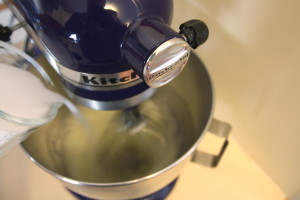
Whip whites. Place egg whites and salt in the mixing bowl and turn to medium high. When the whites have started to get frothy, start adding the cup of sugar. Pour it in slowly, so the whites can dissolve the sugar as it mixes, and gradually increase the speed of the mixer. It should take about a minute, or even a bit longer, to add all the sugar. Once the sugar is incorporated, whip on high until the whites hold firm, shiny peaks and look somewhat like marshmallow fluff. Do not over-whip.
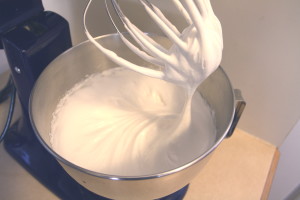
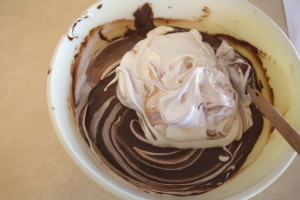
Fold together. This isn’t as bad as it seems. The sugar will help keep the whites from collapsing, but still, remember — gentle. In three separate additions, use a large rubber spatula to fold the whites into the chocolate batter. So it’s: add, fold in, add, fold in, add, fold in. Keep folding until no white streaks remain. See, not too bad, and you’ve finished the batter.
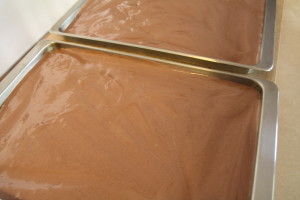
Divide and bake. Divide the batter between your two prepared pans and slide them into your preheated oven to bake for 30 to 35 minutes. Check them early, at about 25 minutes, by pressing lightly in the middle. If the cake springs back, it’s done and ready to cool. Otherwise, bake another few minutes and check again. Do not over-bake.
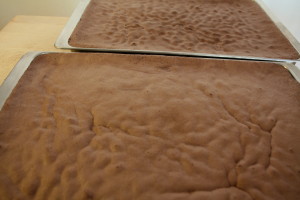
Cool. Place pans on a rack and let cakes cool completely. While they’re cooling, clean up (double-wash the mixing bowl and whisk) and prepare for making the frosting.
Now, we’ll move on to the buttercream frosting. Some of you might have made a frosting in which you cream together butter and sugar and call it buttercream, but that’s not what we’re making. We’re making something a bit lighter and easier to deal with (it’s tastier, too).
Make syrup. In a small saucepan over medium-high heat, stir together the cup of sugar and 1/3 cup water. Bring to a boil and stir until all the sugar dissolves. Once sugar is dissolved, stop stirring, insert a candy thermometer, and boil until the temperature of the syrup is 234°F. Remove from heat but do not let cool (much).
Whip egg whites. Place the egg whites, a pinch of salt, and the vanilla in your scrupulously clean mixer bowl, and, with the whisk attachment, start whipping the egg whites.
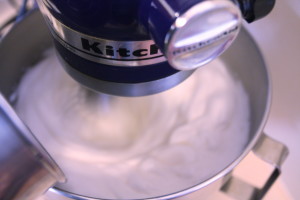
Add syrup. Once the whites begin to get frothy, start adding the syrup. Keep the mixer on medium-high and slowly pour the syrup down the sides of the bowl so the whites don’t cook. Keep pouring until all the syrup is incorporated. Whip until the bowl is cool to the touch.
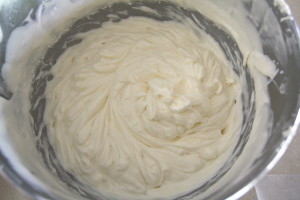
Add butter. With the mixer still on medium-high, start adding pieces of the room-temperature butter. At first, you should be able to add half a stick of butter, then start decreasing until you’re only adding about a tablespoon or two at a time. The frosting will come together and form a nice, smooth, spreadable (and light) frosting.
Yay! We’re through making the cake and frosting. Tomorrow, we’ll show you how to assemble a cake that will really impress.
